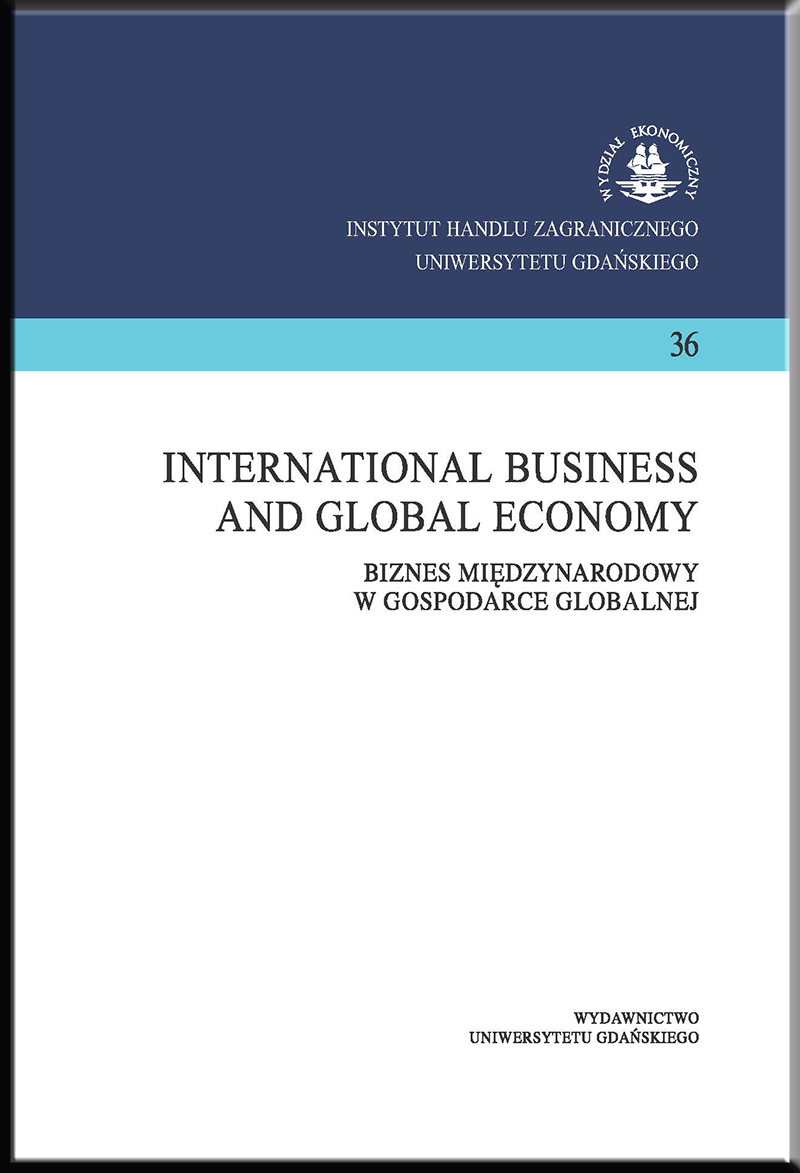Rozwój globalnej gospodarki i międzynarodowego biznesu – nowe spojrzenie na sieci i networking
Słowa kluczowe:
gospodarka, kultura, społeczeństwo, sieci, networking, globalizacjaAbstrakt
Niniejsza praca przedstawia nowe podejście do zagadnienia sieci oraz ich budowania, jak również ich wpływ na współczesne zmiany ekonomiczne i kulturowe w warunkach globalizacji oraz intensywnego rozwoju biznesu międzynarodowego. Opisuje ona zjawisko networkingu i powiązane z nim tendencje rozwojowe w gospodarce i kulturze stanowiące szczególnie ważny obszar poznania naukowego, a także analizuje złożoną systematykę procesów networkingowych oraz procesów tworzenia sieci, kładąc nacisk na postrzeganie procesu budowania sieci jako jednego z najważniejszych priorytetów modernizacji współczesnej gospodarki i kultury oraz postępu społecznego, ekonomicznego, politycznego, naukowego i technologicznego. Przedstawia ona również obiecujące kierunki badań naukowych nad sieciami i ich tworzeniem.
Downloads
Bibliografia
Castells M., 2000, The information age, economy, society and culture, vol. 1: The rise of the network society, Blackwell, Oxford – Malden.
Castells M., 2004a, The information age, economy, society and culture, vol. 2: The power of identity, Blackwell, Oxford – Malden.
Castells M., 2004b, The information age, economy, society and culture, vol. 3: End of millennium, Blackwell, Oxford – Malden.
Currie W., 2000, The global information society, John Wiley, Chichester.
Dang D., Umemoto K., 2009, Modeling the development toward the knowledge economy: A national capability approach, Journal of Knowledge Management, no. 5.
David P.A., Foray D., 2002, An introduction to the economy of the knowledge society, International Social Science Journal, no. 171.
Dicken P., 1998, Global shift: Transforming the world economy, Sage Publications – A. Paul Chapman Publishing, London.
Ein-Dor P., Myers M., Raman K.S., 2004, IT industry development and the knowledge economy: A four country study, Journal of Global Information Management, no. 4.
Farnsworth K., 2005, Promoting business-centred welfare: International and European business perspectives on social policy, Journal of European Social Policy, no. 1.
Fischer S., Gran S., Hacker B., Jakobi A.P., Petzold S., Pusch T., Steinberg P., 2010, Europe 2020 – Proposals for the post-Lisbon strategy, Friedrich Ebert Stiftung, http://library.fes.de/pdf-files/id/ipa/07218.pdf [access: 31.08.2017].
Friedman T.L., 2006, The world is flat [updated and expanded]: A brief history of the twenty-first century, Farrar, Straus and Giroux, London.
Friedman T.L., 2009, The world is flat: Hot, flat, and crowded – why the world needs a green revolution, and how we can renew our global future, Penguin Books, London.
Goeransson B., Soederberg J., 2005, Long waves and information technologies: On the transition towards the information society, Technovation, no. 3.
Grace A., Butler T., 2005, Beyond knowledge management: Introducing learning management systems, Journal of Cases on Information Technology, no. 1.
Huseman R.C., Godman J.P., 1999, Leading with knowledge: The nature of competition in 21st century, London, Sage Publications.
Melnikas B., 2002, Transformacijos, Vaga, Vilnius.
Melnikas B., 2010, Sustainable development and creation of the knowledge economy: The new theoretical approach, Technological and Economic Development of Economy, no. 3.
Melnikas B., 2011, Transformacijåu visuomenë: Ekonomika, kultûra, inovacijos, internacionalizavimo procesai, Technika, Vilnius.
Melnikas B., 2013, Tiniomis grindþiamos visuomenës kûrimas: Globalizacija, darni plëtra, ekonominiai sprendimai, Vilniaus universiteto leidykla, Vilnius.
Melnikas B., 2014, Tarptautinis verslas: Inovacijos ir þiniø ekonomikos kûrimas, Technika, Vilnius.
Melnikas B., Reichelt B., 2004, Wirtschaft und Mentalitaet: Tendenzen der EU-Osterweiterung, Leifim – Verlag, Leipzig.
Ravenhill J., 2008, Global political economy, Oxford University Press, Oxford.
Steinmueller W.E., 2002, Knowledge-based economies and information and communication technologies, International Social Science Journal, no. 171.

 Uniwersyteckie Czasopisma Naukowe
Uniwersyteckie Czasopisma Naukowe




